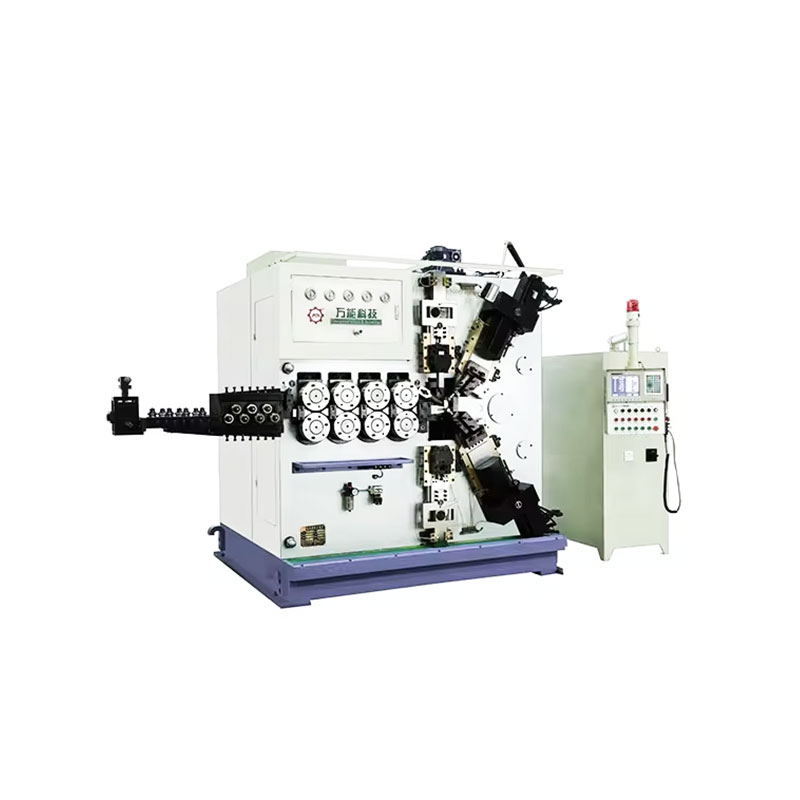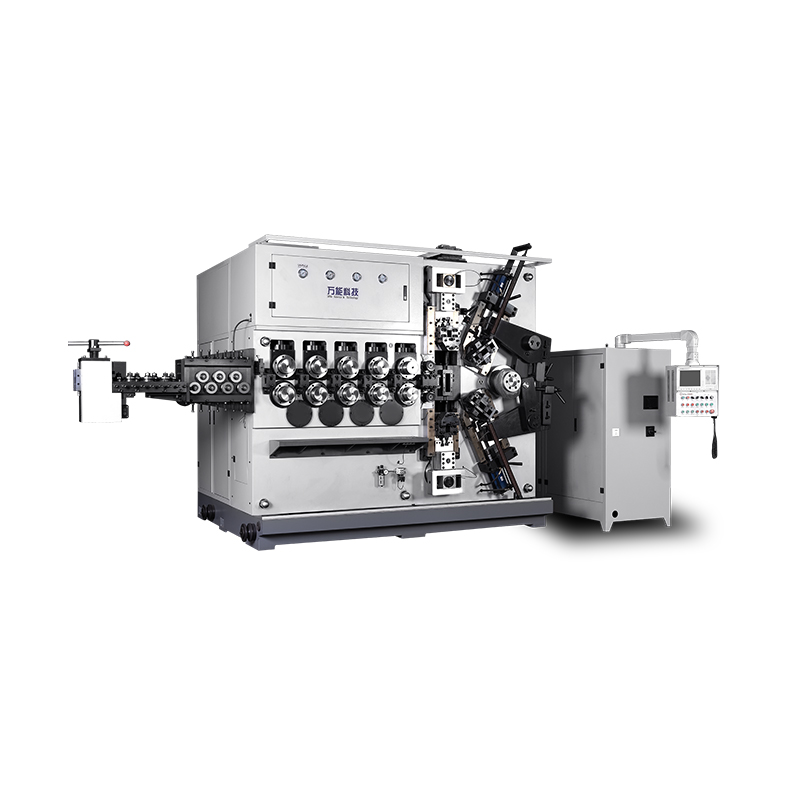Spring machines typically perform temperature detection using various types of temperature sensors or thermocouples. The choice of sensor depends on the specific design and requirements of the machine. Here are some common methods of temperature detection in spring machines:
1.Thermocouples: Thermocouples are widely used temperature sensors in industrial applications, including spring machines. They consist of two different metal wires joined at one end. When the temperature changes, it generates a voltage proportional to the temperature difference. This voltage is measured and converted into a temperature reading by the machine's control system. Thermocouples are known for their accuracy and durability.
2.Resistance Temperature Detectors (RTDs): RTDs are temperature sensors that rely on the change in electrical resistance of a material with temperature. Typically, platinum is used as the sensing material in RTDs. As the temperature changes, the resistance of the platinum element changes proportionally, allowing the machine to determine the temperature. RTDs are known for their high accuracy and stability.
3.Infrared (IR) Sensors: Infrared temperature sensors use infrared radiation to measure the temperature of an object without physical contact. They work by detecting the heat emitted by the object's surface. IR sensors are often used for non-contact temperature measurements in applications where direct contact with the object is not possible or practical.
4.Thermal Imaging Cameras: Some advanced spring machines may use thermal imaging cameras to visualize and measure temperature across the entire machine or specific components. These cameras capture the temperature distribution as a thermal image, allowing operators to identify hotspots or temperature variations.
5.Bimetallic Strips: Bimetallic strips are simple mechanical temperature sensors consisting of two different metals bonded together. These strips bend when exposed to temperature changes, which can be used to activate mechanical switches or triggers within the machine, providing temperature-related feedback.
6.Digital Temperature Sensors: Digital temperature sensors, such as those based on the digital temperature sensor (DS18B20), provide a digital output that can be interfaced with a microcontroller or control system. These sensors are commonly used in smaller machines and for monitoring specific components.
7.Control Systems: Spring machines often have built-in control systems with the capability to monitor temperature using the sensors mentioned above. These control systems can provide real-time temperature data and trigger alarms or shutdowns if temperatures exceed safe limits.
The choice of temperature detection method depends on factors like the machine's design, temperature range requirements, accuracy, and the specific application. In many cases, spring machines use a combination of different temperature sensors to monitor various components and ensure safe and efficient operation. Regular temperature monitoring is crucial to prevent overheating, maintain product quality, and extend the lifespan of the machine.







